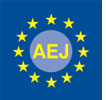
The SafeJournalists Network, on the occasion of the International Day of Media Freedom, May 3rd, calls on the public to support journalists who do their work professionally and resist the suppression of media freedom, because without free media there is no democracy.
Journalists are exposed to various pressures, threats and smear campaigns. Those who want to abolish freedom of thought and expression today openly call for the lynching of journalists and all others who do not think like them. Journalists have been opposing it for a long time, but broad public support and a common fight for free media are necessary. Journalists should report in the interest of citizens, and in order to perform their work professionally, free media is necessary.
That is why we continue the fight for the right to information and invite citizens to join us by supporting free and professional journalism.
Since a large number of threats and even attacks against journalists remain unpunished, SafeJournalists Network calls on the institutions to react more effectively, to protect journalists, and to sanction perpetrators.
It is obvious that many violent people remain beyond the reach of the law, so the trend of threats and attacks on journalists and the media continued this year.
In North Macedonia, since the beginning of 2024, there have been two cases against one journalist, Furkan Saliu. One was a physical attack by the executor, and the other was the arrest by the police and the initiation of criminal proceedings against him, as the Association of Journalists of Macedonia (AJM) registered.
In Albania, 7 cases of attacks on journalists and media were registered this year. Journalist Ardit Hoxha was attacked by the Republican Guard in the Albanian parliament. Journalist Isa Miziraj received threats via e-mail.Journalist Klodiana Lala also received threats. A campaign of defamation was conducted against journalist Ola Xama by the media and public figures. The Prime Minister of Albania, Edi Rama, refused to answer the question of journalist Ambrozia Meta and on that occasion insulted her and tried to touch her on the cheek. The editorial staff of Citizen Channel faced hacker attacks. Prime Minister Rama called certain Albanian media “sewer pipes” in connection with the research program RAI3.
In Montenegro, the Trade Union of Media of Montenegro (TUMM) registered 9 cases against journalists. These were attacks, threats and other incidents. Four by officials, three by politicians and one by a businessman through his company, two cases of threats, one assault, one criminal complaint by another media outlet and one complaint to the police to reveal the source.
Association of Journalists of Kosovo (AJ) registered 9 cases of attacks on journalists and media in Kosovo. In two cases, journalists were threatened with death, journalist Korab Rexhepi and the editorial office of KALLXO. In addition, there were five more cases of threats, a campaign of humiliating journalist Sarandi Ramaj and KTV was conducted. Journalist Lirim Mehmetaj is intimidated, as are journalists from the QIKA media, Lajmi.net. Insults and threats were also addressed to journalist Lorik Gashi. The Periscope portal also received threats. There was also a physical attack on Lajmi.net journalists.
In Croatia, the Croatian Journalists’ Association (CJA) recorded 5 attacks on journalists. Those were two threats to journalists, an attack on Radio Rojc from Pula, and threats were also made to the media and CJA itself.
By the end of April this year, the BH Journalists’ Association registered 12 cases of threats, attacks and other security risks for journalists and media professionals in Bosnia and Herzegovina. Of particular concern is the fact that a significant part of the threats came from public officials and persons in important positions in the executive state power. Also, online harassment and hate speech continue to pose a serious threat to freedom of expression and media freedom, without comprehensive legal measures of the state to sanction cyber violence.
In Serbia the highest number of threats to the death and physical safety of journalists was recorded, a total of 32 cases. There were 3 physical attacks, 1 attack on the media and association, and three cases that are treated as other threats. Thus, the Independent Journalists Association of Serbia (IJAS) recorded a total of 39 cases of threats and attacks on journalists from January to the end of April 2024.



